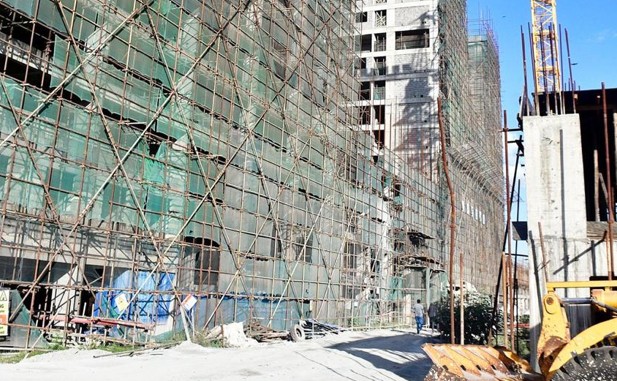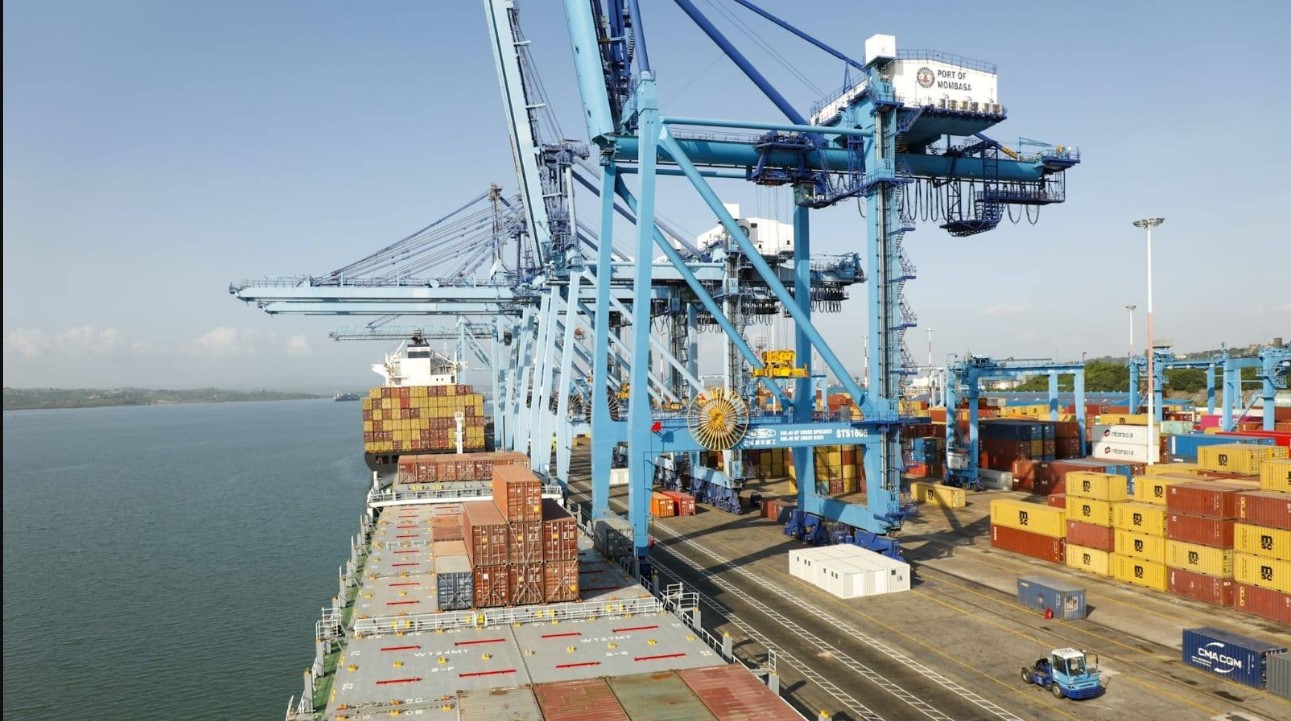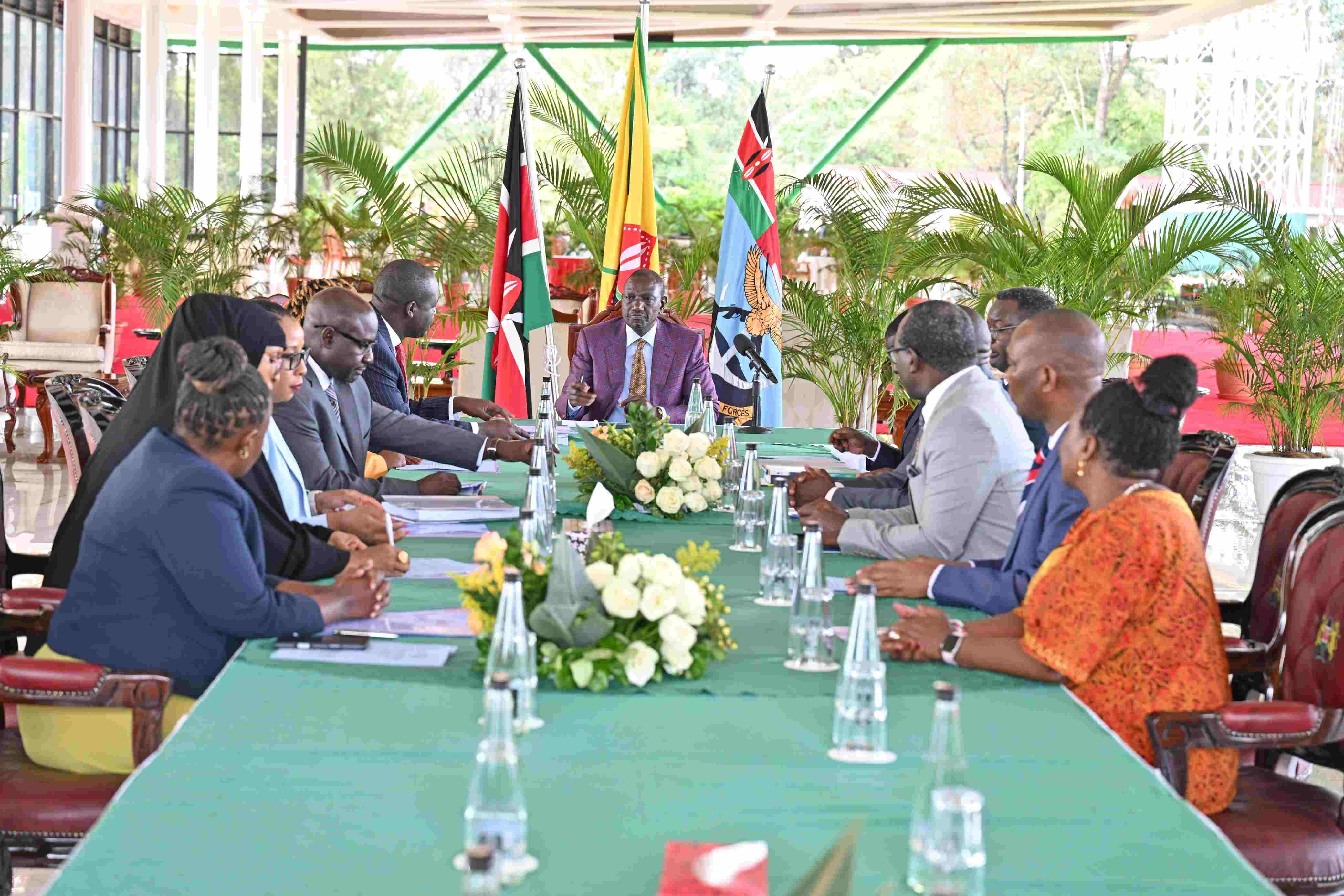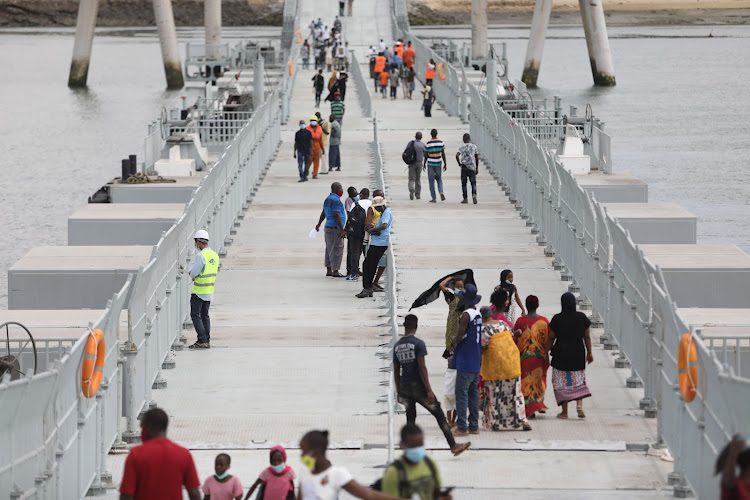Forgotten hygiene: Handwashing struggles in Nairobi slums as Covid protocols fade
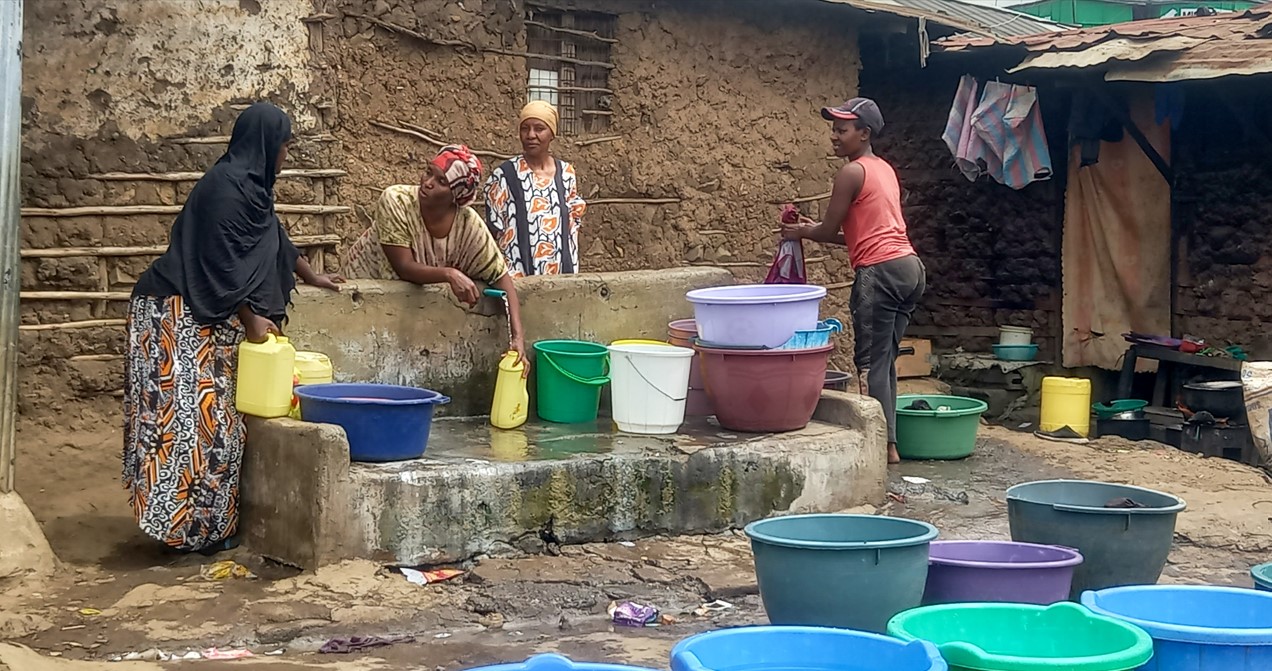
A spot check by The Eastleigh Voice across several slums in Nairobi paints a concerning picture of failed water initiatives, ruined infrastructure, dry taps, and severely limited access to clean water.
Every time the 82-year-old Johnson Kiarie needs water, his eyes fall on the broken water point next to his makeshift charcoal stall in Nairobi’s Majengo slum.
A wave of anger and frustration washes over him as the once-promising source of water now lies abandoned and useless.
More To Read
- WHO members reach deal on global pandemic preparedness after 3 years of talks
- Aid cuts could leave more women dying in pregnancy and birth, UN says
- Five years since Kenya’s first Covid-19 case: Lessons, progress and preparedness
- Kenyan youth ranked among world's most mentally strong, better than many in Western nations
- Financial stress deepens as 78 per cent of Kenyans earn less than before Covid-19 period - Report
- CIA now says Covid-19 'more likely' to have come from lab not nature
During the Covid-19 pandemic, there was a brief moment of hope, with many water points being repaired and handwashing stations set up. But that hope quickly faded, and the improvements were short-lived, leaving the community exactly where it was before.
Having spent his entire life in the slum, Kiarie has witnessed both transformation and deterioration. One of the most painful aspects of his experience has been the constant lack of basic social amenities that continue to affect his community.
The broken water point near his stall had once given him a sense of relief—water was closer, and he no longer had to wander in search of it. Now, it stands as a stark reminder of the access he once had, but which has since been lost.
"As a charcoal vendor and an elderly man, I need water to wash my hands, but sometimes the search for it is so exhausting that I can barely keep up. I wash when I have to. Living alone makes it even harder to stay on top of cleanliness, so I just get by."
Helpless
Kiarie, like many others, feels helpless in the face of these struggles, having to fend for himself and search for water. Sometimes, it feels easier to ignore these challenges and simply trust in God.
"I believe it’s God who watches over us. It’s not like we had better services during Corona, but God sustained us, and that’s the hope we hold on to. But sometimes, maintaining things like cleanliness just isn’t practical with the lack of constant running water and the general neglect of garbage and services."
As the world observes World Hand Hygiene Day, Majmuma Hussein from Sofia in Majengo sits with her friend, catching up during laundry. It's a good day for them because the water is available, allowing them to wash their clothes and keep their homes tidy, which isn’t always the case.
The unavailability of water is so common for Mwajuma that she has lost track of the days. When the water comes, it’s a matter of luck.
"If it’s there, we’re happy; if it’s not, we buy, mainly for basic needs like drinking, cooking, and showering. Sometimes, things like constantly washing hands are easily ignored because the water just isn’t available."
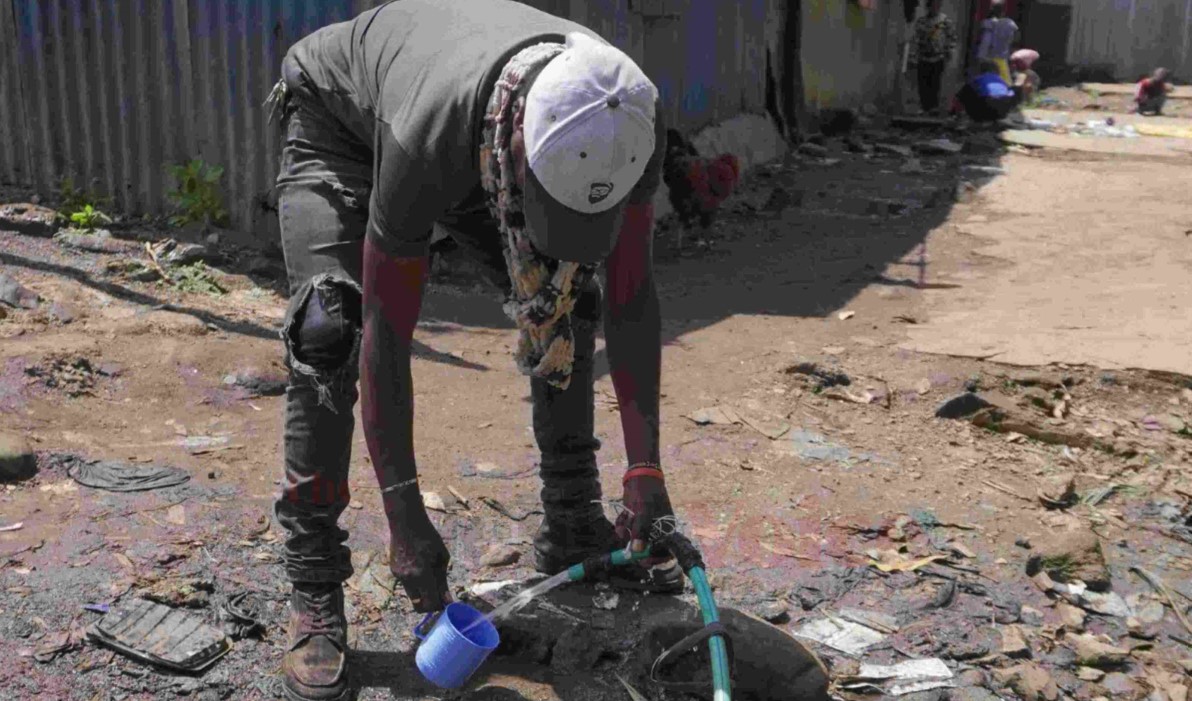 A man draws drinking water directly from an exposed pipe in Majengo slums, Nairobi. (Photo: File/Justine Ondieki)
A man draws drinking water directly from an exposed pipe in Majengo slums, Nairobi. (Photo: File/Justine Ondieki)
Water supply
During the pandemic period, Mwajuma saw significant improvements in her community's water supply. Four taps were repaired and began functioning regularly, with water constantly available. Donated sanitisers helped keep everyone clean and on top of things.
However, now, if one of the taps breaks, it’s not repaired, leaving them in trouble. Currently, they only have one working tap, and that's all they can manage.
"Even though God has kept us safe from cholera, issues like diarrhoea are still easy to come by. We just get by because, honestly, where else can we go? We had many jerrycans we were using before, but now the lack of water makes it hard to maintain proper hygiene. In areas like this, you can't keep things like jerrycans outside because theft is a constant issue. It’s a mix of many problems that just keep piling up."
While many have long forgotten the handwashing protocols that played a vital role in preventing the spread of Covid-19, Mwajuma Said has held on to them. She makes a consistent effort to ensure there is always water available for herself and her three children. In an unforgiving world where accessing water means standing in long queues as it trickles down slowly, consuming hours of the day, she persists, fully aware of how this simple act has protected her family.
“We have a small jerrycan we use for handwashing—an idea borrowed from the improvised methods we used during the pandemic—and it really helps,” she says.
“When I’m around, I always remind the children to wash their hands after using the toilet or before eating. They try to follow through, though it’s hard to keep up when I’m not there. Sometimes, just going to fetch water takes up so much time and energy that handwashing gets skipped.”
Failed water initiatives
A spot check by The Eastleigh Voice across several slums in Nairobi paints a concerning picture of failed water initiatives, ruined infrastructure, dry taps, and severely limited access to clean water, especially in schools within these informal settlements.
In many cases, functioning water points are completely lacking, forcing children to collect water from exposed open pipes located in unsanitary and often dangerous environments, putting their health at significant risk.
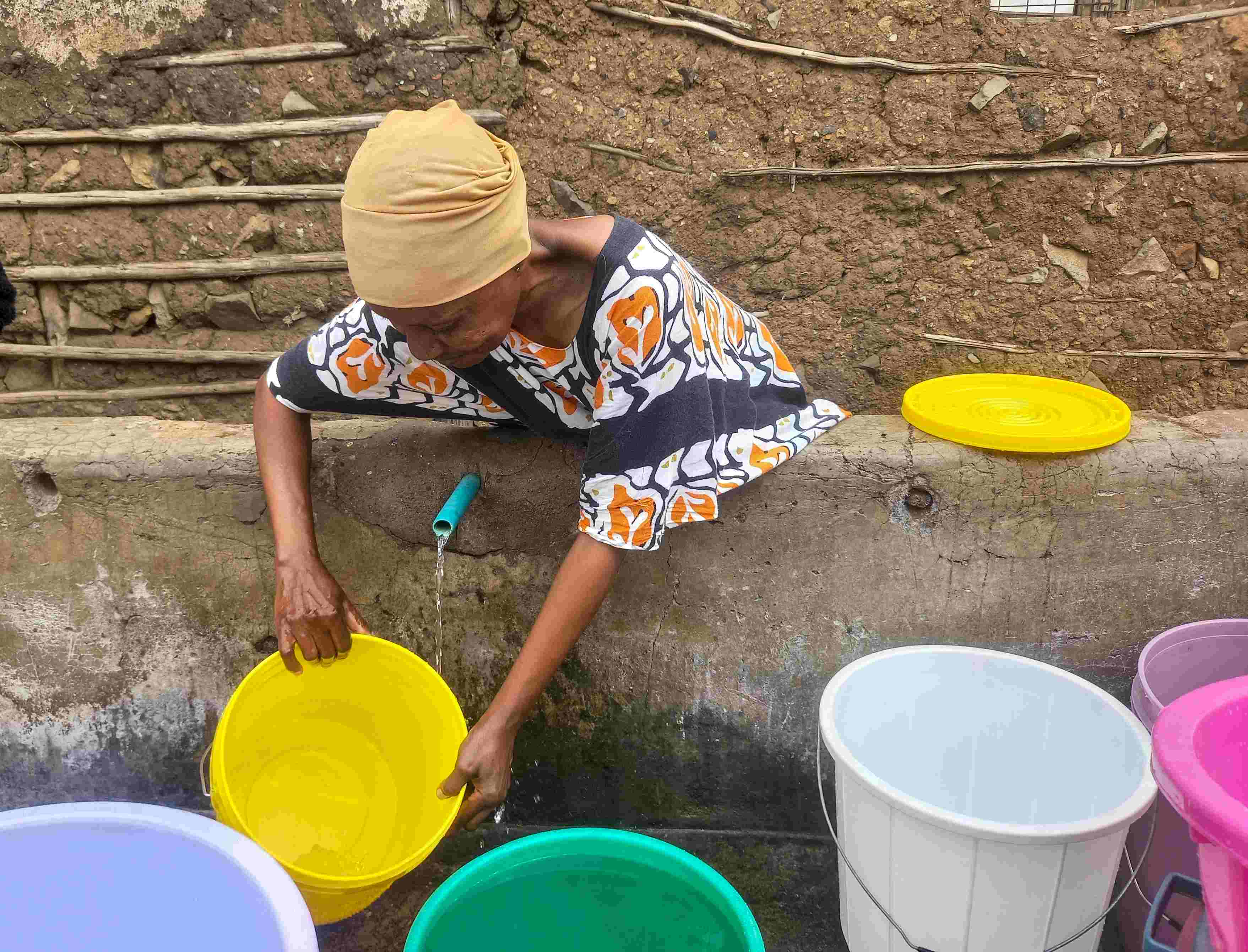 The unavailability of water is so common for Majmuma Hussein that she has lost track of the days. When the water comes, it’s a matter of luck. (Photo: Justine OndiekI)
The unavailability of water is so common for Majmuma Hussein that she has lost track of the days. When the water comes, it’s a matter of luck. (Photo: Justine OndiekI)
Much of the water infrastructure that does exist is damaged and improvised, consisting of underground pipes without proper taps, often just cracked or leaking pieces of tubing. These neglected systems are not only unreliable but also pose serious health hazards, as the water is frequently contaminated and untreated.
As a result, even basic necessities like handwashing or accessing safe drinking water remain out of reach for many residents, highlighting the critical need for reliable and sustainable water solutions in these vulnerable communities.
According to the World Health Organisation (WHO), over three billion people around the world still lack access to basic handwashing facilities.
Deaths
Each year, approximately 400,000 people die from seasonal influenza, while diarrheal diseases claim the lives of around 525,000 children under the age of five—many of these illnesses are directly linked to unclean hands.
Studies have shown that proper handwashing could prevent as many as one million deaths annually. This simple act can reduce the risk of respiratory infections by 16 to 21 per cent, cut deaths from diarrheal diseases by up to 50 per cent, and significantly lower the chances of contracting foodborne illnesses.
Despite these proven benefits, hygiene continues to be one of the most neglected and underfunded areas in public health, lacking both investment and sufficient research.
Diarrheal diseases and flu-related illnesses account for a significant portion of global antibiotic use—a trend that is contributing to the alarming rise of antimicrobial resistance (AMR).
As more diseases become harder to treat due to drug-resistant bacteria, AMR is increasingly being recognised as a global health crisis. Projections estimate that by 2040, AMR could lead to more than 39 million deaths if current patterns continue.
Yet, many of these deaths are preventable through basic interventions such as access to clean water and proper hand hygiene. Simple everyday practices like regular handwashing not only reduce the spread of infectious diseases but also lower the reliance on antibiotics—playing a critical role in curbing the AMR threat before it spirals further out of control.
Diarrhoea remains a leading cause of death among children under five in Kenya, responsible for approximately 8 per cent of all fatalities in this age group.
The high prevalence of diarrhoea can be attributed to several key factors, including unsafe water sources, which account for 75 per cent of cases, inadequate sanitation, which contributes to 63 per cent, and child malnutrition, which is involved in 40 per cent of the instances.
A study in Narok County demonstrated that combining water, sanitation, and hygiene (WASH) interventions with maternal and child health programmes significantly reduced the prevalence of diarrhoea, with a 69.1 per cent decrease in the areas where these measures were implemented.
Top Stories Today




